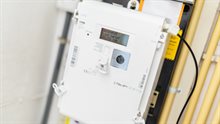Developments for digitising the energy grid
In the FNS partner interviews, we feature a partner every week. Our partners give insight into developments and innovations within their company and their role in 6G Future Network Services.
Recently, we spoke to Elfred van Nieuwamerongen, strategy consultant at Alliander Telecom N.V.
Alliander - Liander
Alliander Telecom is the telecoms supplier for Liander, the network company that supplies electricity and gas to households and businesses, particularly in Friesland, Gelderland and North Holland. Alliander Telecom provides Liander with wireless telecom services for the smart meter and distribution automation, and a fibre-optic network to access data centres and substations, control and switching stations. Alliander Telecom is part of the Telecom Cluster Alliander. Another cluster company, Utility Connect, a joint venture with Stedin, owns the 450 MHz frequency, which is used for wireless communication. This frequency is used to read smart meters with CDMA, and work is now underway to future-proof that network with new technologies. Both Alliander Telecom and Utility Connect are partners in the FNS program.

Participation in FNS
Alliander Telecom's participation in FNS offers the opportunity to stay abreast of future developments in the Netherlands and discover how new technologies can contribute to the digitisation of the energy system. Alliander Telecom is alert when it comes to technology developments that can be adopted, so that in time the right company-specific use cases can be brought in.
Elfred explains, "At the moment, there are some use cases around telecommunications that we are discussing with TNO and TU Delft. One of these use cases has to do with life cycle management of technologies, which we also want to start testing in the DoIoT Fieldlab. We certainly expect to see more use cases in the future."
Changing energy system
The energy transition represents a major societal challenge. From a society largely based on fossil energy, we are working towards a sustainable society that no longer emits greenhouse gases. The final energy system of 2050 still has many uncertainties. However, it is clear that grids will be strengthened, expanded and better utilised through, for example, local energy exchange. With the phase-out of natural gas, a combination of electricity, heat, green gas and hydrogen will emerge. The movement is from a limited number of energy sources (such as the current gas-fired power plants) to more and more decentralised sources (such as wind turbines and solar panels). As a result, the energy system is becoming a coupling of different solutions. Elfred explains: "There are several possible futures for a climate-neutral energy system in 2050. It is still unclear how the energy transition will definitively develop; many scenarios are still possible, but digitisation of grids will be necessary in all cases."
Three major challenges
"For telecommunications, there are three challenges," Elfred explains. "First, there is the life-cycle management of our energy assets. Those energy assets often stay in the field for decades, while telecom technologies change about every 10 years. The second challenge is security. The increasing threat level forces us to look at heavier security systems. The third challenge is keeping it all affordable. For the above three challenges, we need to come up with something - perhaps within FNS - together."

Future Alliander - FNS
Elfred concludes: "We are still in a 5G phase, but are definitely looking ahead to 6G and are increasingly looking for cooperation. We are therefore happy to contribute our knowledge and practical experience from smart grids to FNS. Point of attention within the consortium is our specific industry; we are regulated and therefore have to comply with the Energy Act and other relevant laws."
